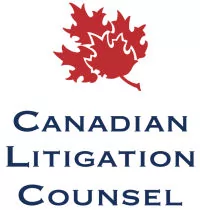On September 8, 2020, the Alberta Court of Queen's Bench upheld a municipality's authority to ban roadside trailer signs in Top v Municipal District of Foothills No. 31, 2020 ABQB 521.
In 2012, the Municipal District of Foothills No. 31 (the "County") passed Land Use Bylaw 60/2014 (the "Bylaw"), which aimed to preserve its serene rural landscape from a decade-long visual blitz of roadside ads and messages by prohibiting "vehicle signs." A group of land owners and an advertising company launched a Charter challenge of the Bylaw, claiming that the prohibition violated their right to freedom of expression. The Court weighed the Applicants' right to freedom of expression under section 2(b) of the Charter against the County's right to protect the vibrant rural aesthetics of their community under Part 17 of the Municipal Government Act. The Court noted that not all forms of expression or Charter infringements are created equal, and determined that the scale weighed in favour of Foothills.
Charter Analysis
Having established that the Bylaw infringed the Applicants' right to freedom of expression, as admitted by the County, the Court's decision guides us through a scenic Section 1 analysis to determine whether the infringement was justified. In its analysis, the Court concluded:
- The Bylaw's objective to preserve the community's visual environment was a pressing and substantial objective meriting protection by Section 1 of the Charter. The Bylaw was rationally connected to this objective as the County sought to enhance a busy roadway, which informs most travelers' experience with the community, and the trailer signs were an "obvious repurposing of the underlying industrial object" with "an intrinsically déclassé quality." (Top v Municipal District of Foothills No. 31, 2020 ABQB 521, para 58.)
- As the County offers multiple meaningful alternatives to advertise, including the ability to apply for billboards and mobile signs in different locations, the Bylaw fell within the range of minimal impairment to freedom of expression rights.
- While advertisers can no longer display their ads as largely and cheaply as they would like, and certain landowners can no longer generate income from these advertisers, the Bylaw's restrictions achieve an appropriate balance between certain expressive media and the overall aesthetics of the community. Further, the benefit to the community as a whole outweighs the adverse effects to a relatively small number of individuals that are impacted by the Bylaw.
Takeaways
Roadside trailer signs can be an attractively inexpensive strategy for advertisers to generate revenue. For this reason, prolific roadside advertisements can be problematic for municipalities, communities, and road users. Although the Court's decision in Top is reassuring, municipalities should be careful when drafting Bylaws that can be seen as infringing on freedom of expression. Given the Court's reasons, we advance three recommendations for municipalities when drafting these types of bylaws.
Firstly, municipalities must ensure that it is enacting a bylaw for a legitimate regulatory purpose authorized by the MGA. The Bylaw should include clear objectives. Importantly, bylaws must not attempt to regulate what is being said (and in some cases, even how something is said if the "medium" of expression is essential to the message being conveyed) to avoid running afoul of section 2(b) of the Charter.
Secondly, municipalities must be careful with the extent of their regulation. The availability of alternatives for expression in Foothills' Bylaw was an important feature that allowed the Court to find that there was minimal infringement on the Applicants' right to freedom of expression.
Finally, municipalities should be consistent in bylaw enforcement, as well as its logic for implementing prohibitions. Inconsistent enforcement may undermine the importance of the bylaw's objective. On the other hand, certain selective bans may be seen as a veiled attempt at unlawfully restraining freedom of expression. Although the Court in Top held that the County's Bylaw did not have an ulterior motive to limit expression, it cautioned the County that it should reconcile its divergent treatment of unsightly parked trailers without signs and parked trailers with signs. (Top v Municipal District of Foothills No. 31, 2020 ABQB 521, para 68.)
As you can appreciate, the language used in a bylaw is of utmost importance. We always recommend obtaining legal advice as part of any bylaw development process. Brownlee LLP are always happy to assist municipalities in all areas of municipal law, including bylaw drafting and bylaw enforcement.
* * *
Brownlee LLP is a member of the Canadian Litigation Counsel, a nationwide affiliation of independent law firms .
The content of this article is intended to provide a general guide to the subject matter. Specialist advice should be sought about your specific circumstances.



